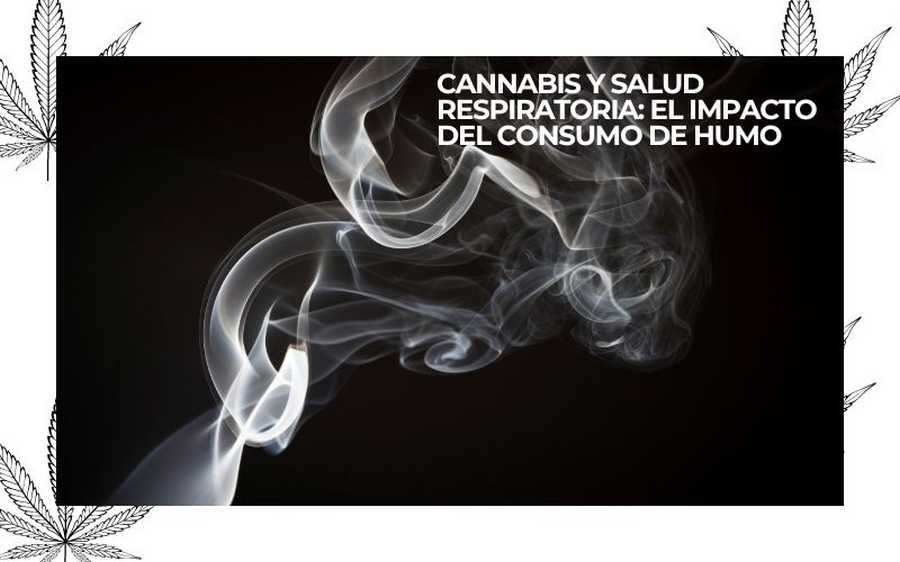Sin categorizar
Cannabis and Respiratory Health: The Impact of Smoke Consumption
Cannabis and Respiratory Health: The Impact of Smoke Consumption
Cannabis, a plant with both recreational and medicinal uses, has been the subject of growing interest regarding its potential effects on respiratory health.
In this article, we will thoroughly explore the various dimensions of how cannabis consumption, especially through smoke, can influence the respiratory system.
Breaking Down Cannabis Consumption Methods
Understanding how cannabis is consumed is essential for assessing its impact on respiratory health. Below, we’ll delve deeper into the different modalities of consumption.
Exploring Consumption Methods
- Smoking and its Variants: Combusting cannabis flower and inhaling its smoke is a traditional method. Variations include the use of pipes, bongs, and joints.
- Vaporization: Beyond Smoke: Vaporization heats cannabis at temperatures that release cannabinoids without producing smoke, which is considered a less harmful alternative.
- Edibles and Tinctures: Consuming cannabis through edibles and tinctures avoids smoke inhalation, being popular options in regulated markets.
Impact of Cannabis Consumption on Respiratory Health: A Detailed Perspective
Chemical Components of Cannabis Smoke
- Tar and Carbon Monoxide: Combusting cannabis generates tar and carbon monoxide, compounds also found in tobacco smoke and can negatively affect the lungs.
- Cannabinoids and their Variants: In addition to major cannabinoids like THC and CBD, combustion can create variants that have not yet been fully studied.
Effects of Smoke Consumption on Respiratory Airways
- Irritation and Cough: Smoke inhalation can irritate the respiratory airways, leading to persistent cough and discomfort.
- Pulmonary Inflammation: Studies suggest that pulmonary inflammation is a possible response to cannabis smoke, though more research is needed to fully understand this phenomenon.
Debunking Misconceptions and Revealing Realities
Myth 1: Harmlessness of Cannabis for the Lungs
Contrary to the mistaken belief that cannabis is harmless to the lungs, research indicates that inhaling cannabis smoke can have adverse impacts.
Myth 2: Direct Comparison with Tobacco
Although some argue that cannabis is less harmful than tobacco, the complexity of chemical compounds and the variety of consumption methods make a direct comparison difficult.
Myth 3: Vaporization as a Panacea
While vaporization is a safer option than smoking, it doesn’t eliminate all risks.
It’s crucial to understand that any form of combustion can generate harmful compounds.
Research and Realities of the Association between Cannabis and Respiratory Health
Reality 1: Increased Risk of Chronic Bronchitis
Studies have noted an increased risk of developing chronic bronchitis in frequent cannabis users, even when compared to non-users.
Reality 2: Association with Serious Respiratory Diseases
The relationship between cannabis consumption and serious respiratory diseases like COPD and pneumonia remains an active area of research, with current results suggesting an association but not establishing causality.
Reality 3: Vaporization as a Less Harmful Alternative
Despite uncertainty about certain risks associated with vaporization, studies suggest it’s a less harmful option for respiratory health compared to traditional smoking.
Practical Strategies to Reduce the Respiratory Impact of Cannabis
Consumption
Given the identified risks, it’s vital to explore practical strategies that consumers can implement to reduce the impact on respiratory health.
Risk Mitigation Strategies
- Adopting Vaporization: While not risk-free, vaporization is a less harmful alternative to smoking.
- Controlling Consumption Frequency: Reducing consumption frequency can decrease exposure to harmful substances present in smoke.
- Exploring Other Consumption Modalities: Opting for edibles, tinctures, or other forms not related to direct inhalation can be beneficial for respiratory health.
Legalization of Cannabis: Perspectives and Challenges
The legalization of cannabis has marked a significant shift in perception and access but also poses ongoing challenges.
Advantages of Legalization
- Quality Control and Safety: Legal products often undergo quality testing, reducing risks associated with unwanted substances.
- Education on Responsible Consumption: Legalization is often accompanied by educational campaigns promoting responsible consumption.
Persistent Challenges
- Continued Essential Research: Although there are advancements, more research is needed to fully understand the effects of cannabis on respiratory health.
- Effective Regulation of Consumption Methods: Effective regulation of consumption methods is crucial to ensure consumers are informed and safe.
CBD and its Potential Role in Respiratory Health
CBD (cannabidiol), a non-psychoactive cannabinoid present in cannabis, has gained attention for its therapeutic properties. Its relationship with respiratory health is an emerging topic in research.
Anti-inflammatory Properties of CBD
Preliminary studies suggest that CBD may have anti-inflammatory properties that could be beneficial for reducing pulmonary inflammation associated with cannabis consumption.
Potential Bronchodilator Effects
The possibility that CBD has bronchodilator effects has been explored, which could have positive implications for those with pre-existing respiratory conditions.
Need for Further Research
While these findings are promising, more research is needed to fully understand the impact of CBD on respiratory health and how it may mitigate potential negative effects associated with cannabis consumption.
Final Reflections: Considering Benefits and Risks
This detailed analysis seeks to provide a deeper insight into the relationship between cannabis and respiratory health. While cannabis may offer therapeutic benefits, smoke inhalation raises legitimate concerns about lung health.
By adopting an informed and balanced approach, consumers can make conscious decisions about their cannabis consumption, considering both potential benefits and risks to respiratory health.
The evolution of research and regulation will continue to shape the narrative around this topic, but education and personal awareness are fundamental elements for healthy and responsible decision-making.
If you’re looking for high-quality cannabis seeds, Pure Instinto is an excellent choice that meets all these criteria and will provide you with a satisfying shopping experience.

